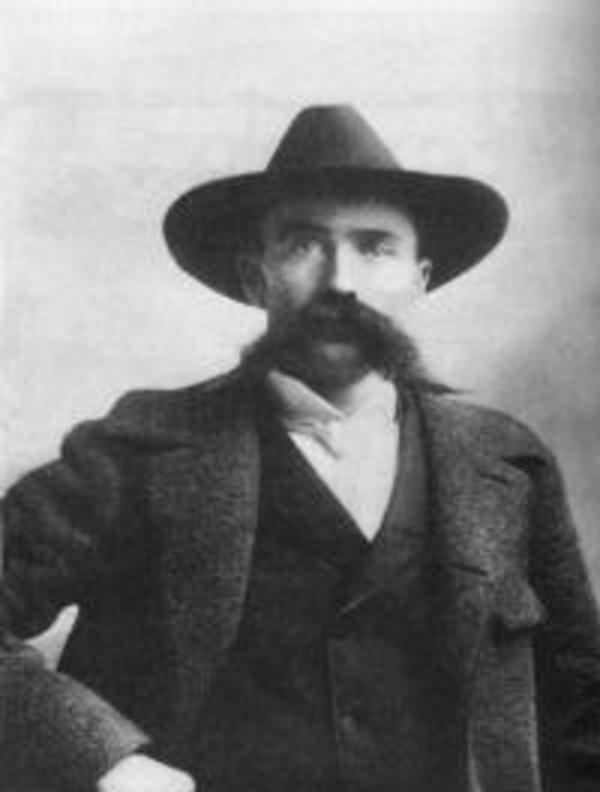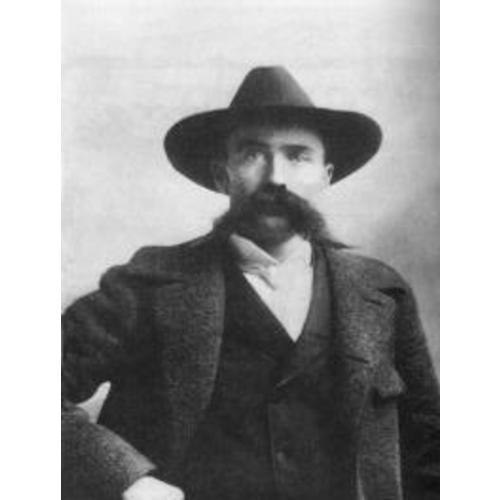
Source: Link
MacLEAN, ALEXANDER, mariner and sealer; b. 15 May 1858 in East Bay, Cape Breton County, N.S., youngest child of Ailean (Allan) MacLean and Caitriona MacCormick; m. 25 Nov. 1884 Lucy Dauphin (d. 1926) in Victoria, and they had one daughter; d. 26 Aug. 1914 in Vancouver.
Alex MacLean came from a seafaring family, and after some local sailing he left Cape Breton at the age of 16 for the Eastern Seaboard, where he acquired additional coastal and deep-sea experience. In 1879 he worked his passage to San Francisco on the Santa Clara. His brother Dan went out around the same time. By 1881 Alex was in Victoria as mate on the Sir James Douglas. He travelled the coast between San Francisco and Alaska, dabbled in prospecting, and frequently crossed the path of Dan. Victoria became Alex’s main base in the 1880s. He and Dan were among the first to engage in pelagic sealing in the Bering Sea, and Victoria would be the home port for the Canadian sealing fleet in the Pacific.
In 1883 the City of San Diego, out of San Francisco, with Dan and Alex on board, made the first substantial catch of seals in the Bering Sea. The MacLeans duplicated their success with separate vessels in 1884. The next year they attempted to settle a debate about the most profitable method of sealing. They set out in similar schooners, Dan carrying white hunters, boats, and guns, and Alex a native crew with canoes and spears. They returned to Victoria with 2,309 and 2,073 skins respectively. The result was, however, a draw; Alex’s slightly smaller harvest was offset by the lower costs of the native methods.
In 1886 Alex had the second largest harvest, 3,325 skins, while Dan sailed into the record books with 4,268 skins. But also in that year the American government, concerned about the activities of pelagic sealers, declared the eastern part of the Bering Sea a mare clausum, seized some vessels, and ordered others out. Still, such was the sailing prowess and success in sealing of the two Cape Bretoners that the 1887 season proved almost as lucrative and their reputation was enhanced. Public interest increased in 1888 when the brothers brought in skins with an estimated value of $58,000. Alex had the highest catch in the Victoria fleet that year, Dan the third highest. The following year catches were down and seizures by the Americans were up. For both MacLeans the 1890s would be a period of confrontations, difficulties, and exploits. Their home port for most of the decade was San Francisco.
In 1891 the British and American governments agreed to prohibit sealing in the eastern Bering Sea for a year, and like other Canadian and American sealers Alex turned to the Russian side of the sea and to the coast of Japan. That summer, while raiding the rookeries of the Komandorskiye Islands, Russia, Alex was caught after some desperate manœuvres. He and his crew spent the next few months in Russia, primarily in Vladivostok. Years later, after arbitration at The Hague, Netherlands, the Russian government paid the damages assessed for the seizure. In 1893 the youthful Jack London spent seven months on a sealing schooner, heard many stories of the MacLeans, and frequently crossed the paths of their vessels. The voyage would form the basis for one of his most successful novels, The Sea-Wolf. Alex would have been especially hard to miss in the Alexander, a 294-ton steam-powered barque, the largest sealer on the Pacific coast. In The Sea-Wolf it became the Macedonia, captained by Death Larsen.
The Sea-Wolf was a decade away but the public was already fascinated with the MacLean brothers. In 1894, after receiving unfavourable reports from Yokohama, Japan, one San Francisco paper noted: “The McLean family seems determined to get itself into trouble no matter what part of the world it takes itself to.” In 1895 “the two most daring seal-hunters in the United States” ran into a problem in San Francisco. A case of mistaken identity – they were “strikingly similar in appearance” – found Dan instead of Alex at City Hall: Dan was reported as saying that “he would stand responsible for his brother, and that when they had one of the McLeans he was just as good as the other.” The difficulty, caused not for the first time by the complaints of creditors, was soon resolved. The years 1894–95 were not successful sealing seasons and signalled the end of the MacLeans’ participation in the regular sealing fleet. Their departure coincided with the decline of the industry.
In September 1896 Alex returned to Victoria as an expert witness for the American government at the hearings of the Bering Sea Claims Commission. His appearance there was followed by an unsuccessful mining expedition in the Solomon Islands, which ended with Alex sailing the Sophia Sutherland hundreds of miles, possibly single-handed, because most of the crew had yellow fever. Eventually he reached Apia (Western Samoa). Alex was then attracted to the Klondike and Alaskan gold-rushes. Stories from Bennett, B.C., the gateway to the Klondike, and Nome, Alaska, augmented his reputation as an individual not to be antagonized. By 1902 he was back in San Francisco and for a while he was master of the steamer City of Sydney.
One of his most publicized escapades occurred in 1904 when he resurrected and outfitted the Jennie Thelin, renamed it the Carmencita, acquired Mexican registration, and proceeded to raid the rookeries in the Bering Sea. The venture was not a success. After wintering in Victoria the vessel acquired another name, Acapulco, and new provisional registration, and Alex attempted a second raid. It became front page news in June 1905 and Alex was immediately linked to London’s immensely popular Sea-Wolf, published the previous autumn. The proliferation of charges made against him (poaching, theft, trespassing, and conspiracy to defraud the American Treasury Department), his flouting of a host of regulations for two years, and the inability of the authorities to track him down increased the ire of the bureaucrats and fascinated the newspapers. In mid September 1905 Alex brought the Acapulco into Victoria, and he was eventually fined under three sections of the Customs Act. A Victoria paper acknowledged that “as a navigator and sealer it is admitted that he has no equal,” but his sealing days were now over; so too were his sojourns in the United States. The following year, after a report circulated that Alex had been lost while fishing, he returned and commented that his demise was “much exaggerated.” Later he ran explosives up the Skeena River and operated a small tug out of Vancouver. He drowned accidentally in False Creek, Vancouver, on 26 Aug. 1914.
A number of accounts suggest that the MacLeans acted with cruelty and heartlessness towards their crews, but many individuals acquainted with them attested to their civility, fairness, and generally pleasant natures. Their sealing successes, independent attitudes, exceptional, exacting, and demanding seamanship, and of course pugilistic abilities (they had “cleaned up quite a few Barbary Coast saloons in San Francisco”) ensured a solid link and a confusion, which have lasted to the present, between the fictional Wolf and Death Larsen and Cape Bretoners Alex and Dan MacLean in the minds of those who follow the sea.
BCARS, E/E/M221T. City of Vancouver Arch., Add. mss 782 (H. L. Cadieux coll.), vol.46, files 241–42; vol.47, files 243–45. NA, RG 23, files 2691, 3136 (mfm. at Univ. of B.C. Library, Arch. and Special Coll. Div., Vancouver). St Andrew’s Cathedral (Victoria), RBMB, 25 Nov. 1884. Bering Sea Claims Commission, Record of evidence taken at Victoria, British Columbia, by the commissioners, under the convention of February 8, 1896, between Great Britain and the United States (5v., [Washington, 1897?]). [A copy of the American edition is available on CIHM microfiche and is listed in its Reg.; a British edition with identical content was also published, probably at London in 1897.] Bering Sea Tribunal of Arbitration, Fur seal arbitration; proceedings of the tribunal of arbitration, convened at Paris under the treaty between the United States of America and Great Britain, concluded at Washington, February 29, 1892 . . . (16v. in 12, Washington, 1895). B. C. Busch, The war against the seals: a history of the North American seal fishery (Kingston, Ont., and Montreal, 1985). D. E. Hensley, “Jack London’s use of maritime history in The Sea-Wolf,” Pacific Historian (Stockton, Calif.), 23 (summer 1979): 1–8. Lewis & Dryden’s marine history of the Pacific northwest; an illustrated review of the growth and development of’ the maritime industry . . . , ed. E. W. Wright (Portland, Oreg., 1895; repr. Seattle, Wash., 1967). Tom MacInnes, Chinook days (Vancouver, 1926), 149–58. Neil MacNeil, The Highland heart in Nova Scotia (New York, 1948; repr. Antigonish, N.S., 1980). Peter Murray, The vagabond fleet: a chronicle of the North Pacific sealing schooner trade (Victoria, 1988). D. G. Paterson, “The North Pacific seal hunt, 1886–1910: rights and regulations,” in British Columbia: historical readings, ed. W. P. Ward and R. A. J. McDonald (Vancouver, 1981), 343–66. D. G. Paterson and J[ames] Wilen, “Depletion and diplomacy: the North Pacific seal hunt, 1886–1910,” in Research in economic history . . . , ed. Paul Uselding et al. (12v. to date, Greenwich, Conn., and London, 1976– ), 2: 81–139. Noel Robinson, “The real Sea Wolf,” Cape Breton Mirror (Glace Bay, N.S.), 2 (1952–53), no.2/3: 12–13, 20–22. A. W. Roy, “Life and death of the Sea Wolf,” Atlantic Advocate (Fredericton), 48 (1957–58), no.6: 77–84. U.S., Dept. of State, Papers relating to the foreign relations of the United States . . . (Washington), 1902, app.1 (Whaling and sealing claims against Russia . . .).
Cite This Article
Don MacGillivray, “MacLEAN, ALEXANDER,” in Dictionary of Canadian Biography, vol. 14, University of Toronto/Université Laval, 2003–, accessed December 30, 2025, https://www.biographi.ca/en/bio/maclean_alexander_14E.html.
The citation above shows the format for footnotes and endnotes according to the Chicago manual of style (16th edition). Information to be used in other citation formats:
| Permalink: | https://www.biographi.ca/en/bio/maclean_alexander_14E.html |
| Author of Article: | Don MacGillivray |
| Title of Article: | MacLEAN, ALEXANDER |
| Publication Name: | Dictionary of Canadian Biography, vol. 14 |
| Publisher: | University of Toronto/Université Laval |
| Year of publication: | 1998 |
| Year of revision: | 1998 |
| Access Date: | December 30, 2025 |



